Hellebores may be my all-time favorite winter-blooming plant.Their flowers persist for months, sometimes beginning as early as December, and frost barely bothers them. While a winter storm created icy conditions and dumped snow onto a good portion of the South the past few days, we were enjoying cold rain—until yesterday. I woke up to temperatures 16 degrees below freezing and giant, fluffy snowflakes falling from the sky. Helena, Alabama's winter has been relatively mild this year, and gnats and other bugs have been hanging around. So I was grateful for the freezing temps that will help kill the pests, especially because I know the frigid weather will be short-lived. Within a few weeks spring will be waking up our world. Meanwhile, I wanted to see how my garden was responding to our shot of winter. So I bundled myself into heavy winter clothing and ventured into the garden.
While a winter storm created icy conditions and dumped snow onto a good portion of the South the past few days, we were enjoying cold rain—until yesterday. I woke up to temperatures 16 degrees below freezing and giant, fluffy snowflakes falling from the sky. Helena, Alabama's winter has been relatively mild this year, and gnats and other bugs have been hanging around. So I was grateful for the freezing temps that will help kill the pests, especially because I know the frigid weather will be short-lived. Within a few weeks spring will be waking up our world. Meanwhile, I wanted to see how my garden was responding to our shot of winter. So I bundled myself into heavy winter clothing and ventured into the garden.
I was happy to see a variety of hardy winter blooms that survived the freeze. Hellebores were hunkering down under the cold, but their blooms looked good. I am confident they will rapidly recover as soon as the weather improves.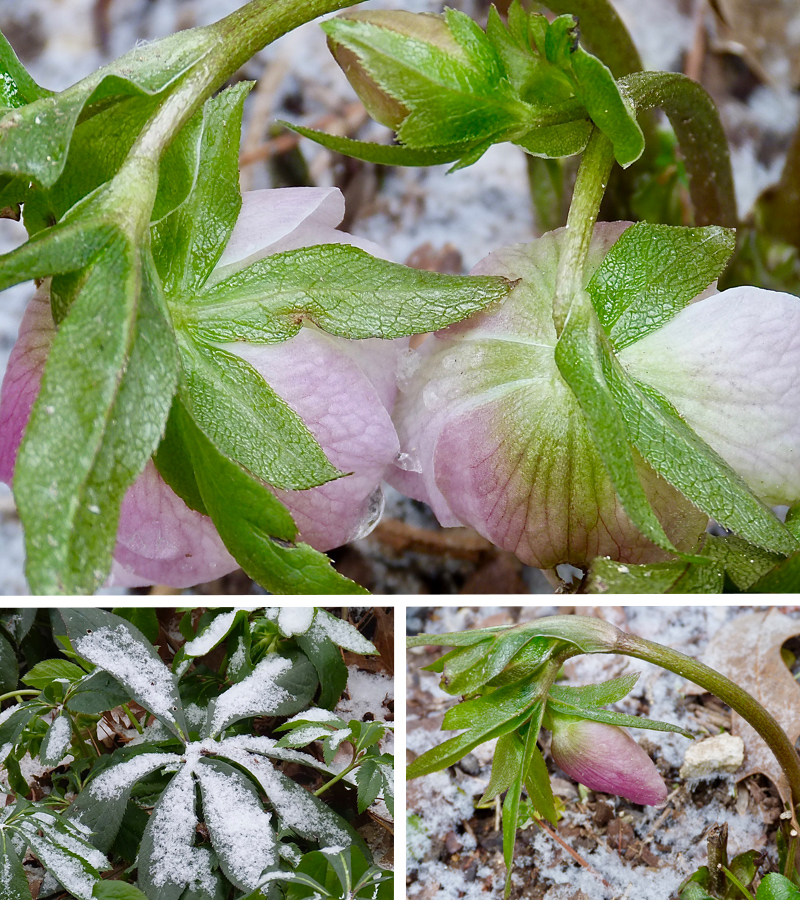 The yellow Edgeworthia flowers below were not completly open. They remained beautiful, although they were covered by a film of ice. There are many buds on the shrub. Prolonged hard frost will damage them, but they tolerate brief dips below freezing.
The yellow Edgeworthia flowers below were not completly open. They remained beautiful, although they were covered by a film of ice. There are many buds on the shrub. Prolonged hard frost will damage them, but they tolerate brief dips below freezing.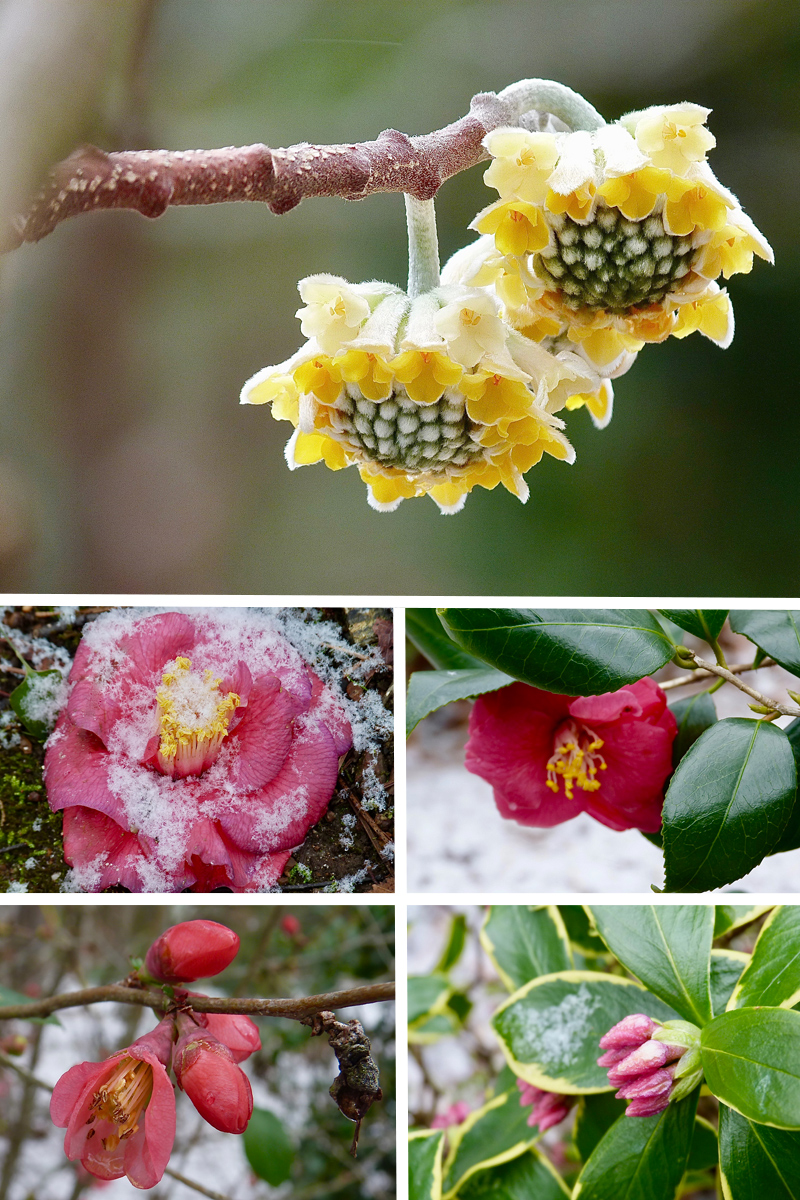 Small photos above, clockwise from top left: Camellia bloom that has fallen to ground, beautiful to the end; Another camellia flower is not very happy with the frost, but hundreds of buds on the same shrub are undamaged; Daphne odoro 'Aureomarginata' produces late winter, waxy blooms.These buds were unharmed by the hard frost; Flowering quince produces blooms for several months from late January into spring. Open blooms will be injured by severe frost, but unopened buds are very tolerant of the icy temps.One camelia with unusually frost-tolerant blooms is Camellia japonica 'Crimson Candles.' The temperature was about 20 degrees F when I took these photos:
Small photos above, clockwise from top left: Camellia bloom that has fallen to ground, beautiful to the end; Another camellia flower is not very happy with the frost, but hundreds of buds on the same shrub are undamaged; Daphne odoro 'Aureomarginata' produces late winter, waxy blooms.These buds were unharmed by the hard frost; Flowering quince produces blooms for several months from late January into spring. Open blooms will be injured by severe frost, but unopened buds are very tolerant of the icy temps.One camelia with unusually frost-tolerant blooms is Camellia japonica 'Crimson Candles.' The temperature was about 20 degrees F when I took these photos:
If daffodils are in full bloom. their flowers are likely to be killed by frost. But if their buds have not opened, they can survive frigid weather.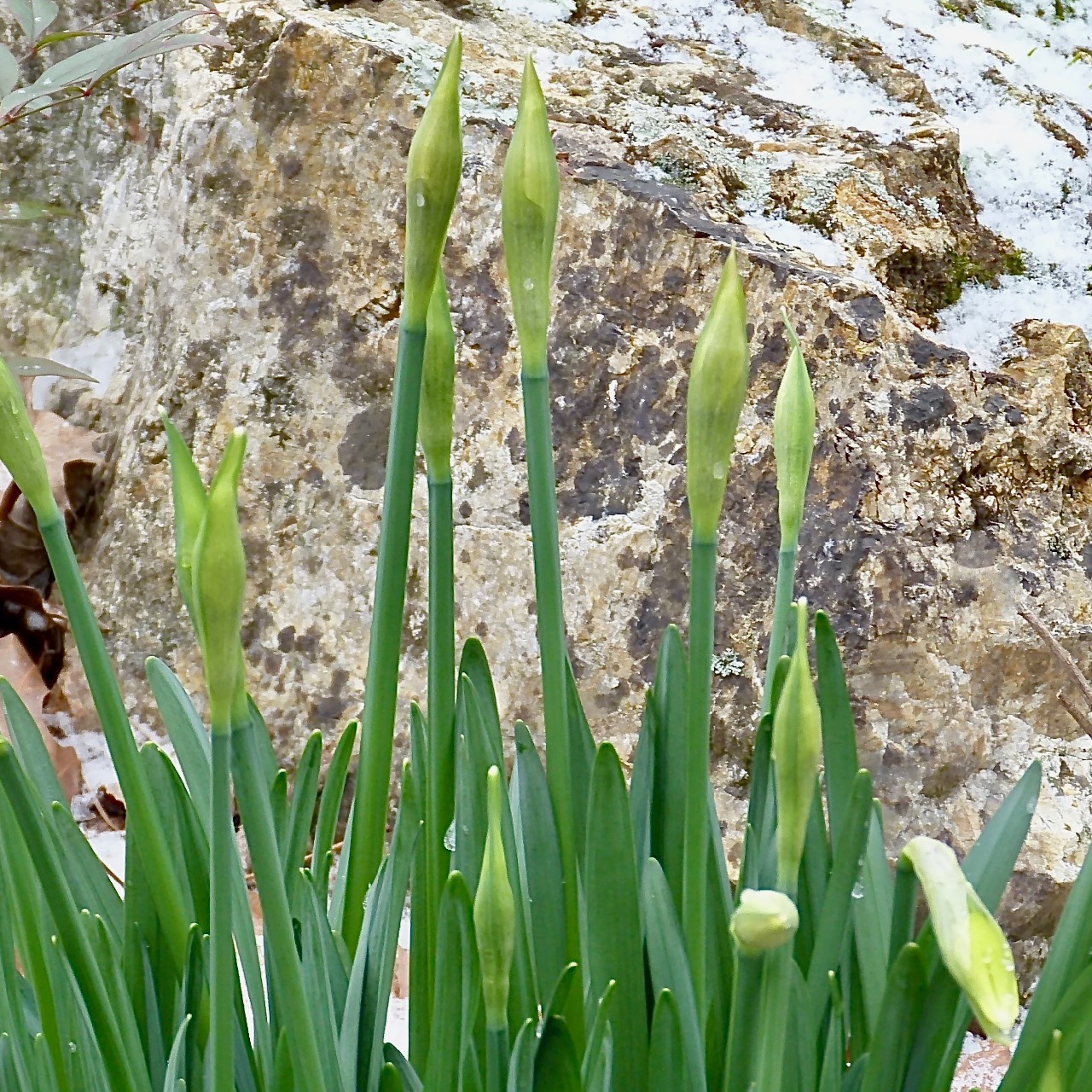
As I walked around in the snow yesterday, I noted other features that added interest to my winter garden. I depend upon foliage to provide the backbone to my garden, especially evergreens that look great when many other plants are dormant: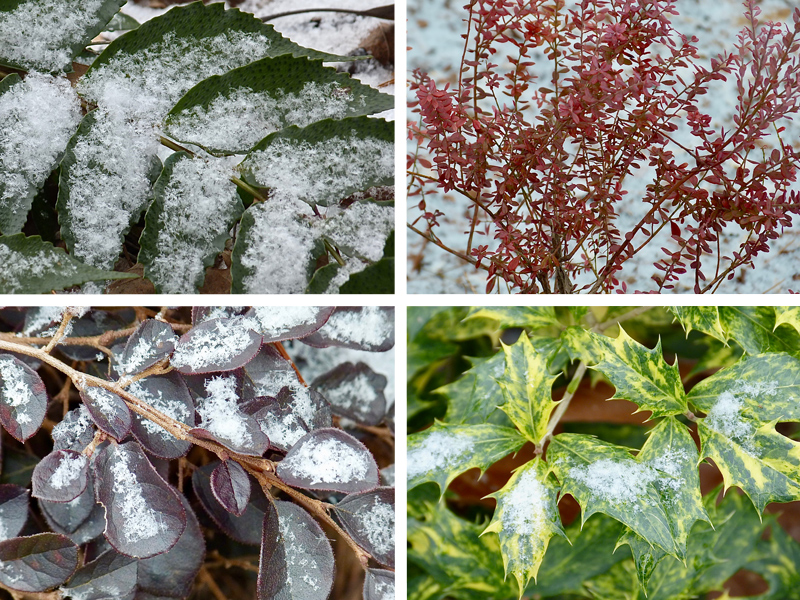 Clockwise from upper left:Hardy Japanese Holly Fern (Cyrtomium fortunei); Vaccinium corymbosum is a compact, native evergreen blueberry bush. The reddish foliage will become glaucous blue as warmer weather arrives; Variegated false holly (Osmanthus heterophyllus 'Goshiki'); Loropetalum 'Purple Pixie' is a truly dwarf loropetalum.
Clockwise from upper left:Hardy Japanese Holly Fern (Cyrtomium fortunei); Vaccinium corymbosum is a compact, native evergreen blueberry bush. The reddish foliage will become glaucous blue as warmer weather arrives; Variegated false holly (Osmanthus heterophyllus 'Goshiki'); Loropetalum 'Purple Pixie' is a truly dwarf loropetalum.
Pleopeltis polypodioides, also known as the resurrection fern, is an intersting evergreen plant. In dry weather it shrivels up to a grayish clump and looks dead, but as soon as it receives water it rapidly recovers and looks healthy and green again. It is native to the southeastern US, but can be found as far north as New York. This one is growing out of a crack in a large rock: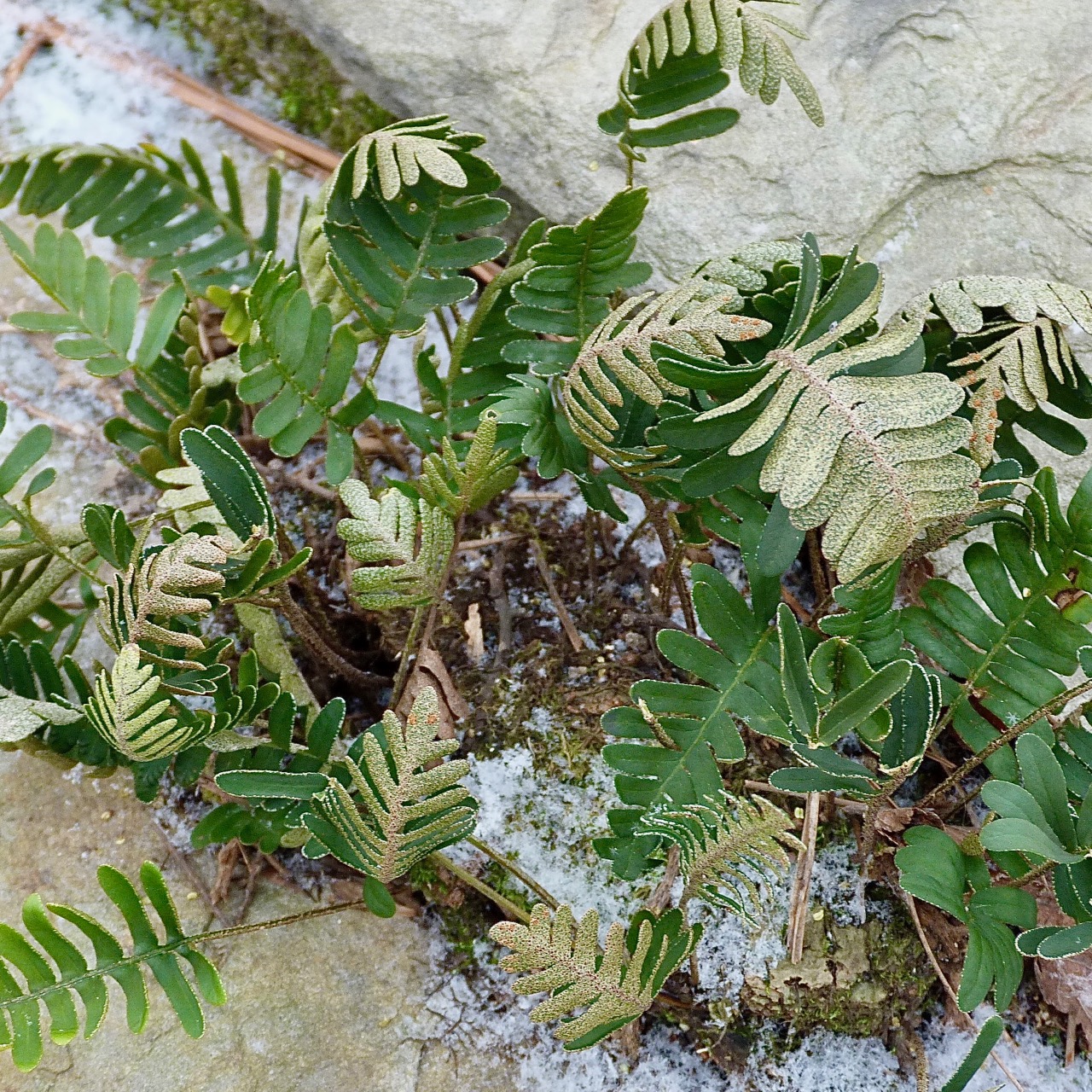
The fairies inside my Wheelbarrow Fairy Garden have taken themselves and all of their belongings inside for the winter, but their warm weather habitat inside the wheelbarrow is doing well:
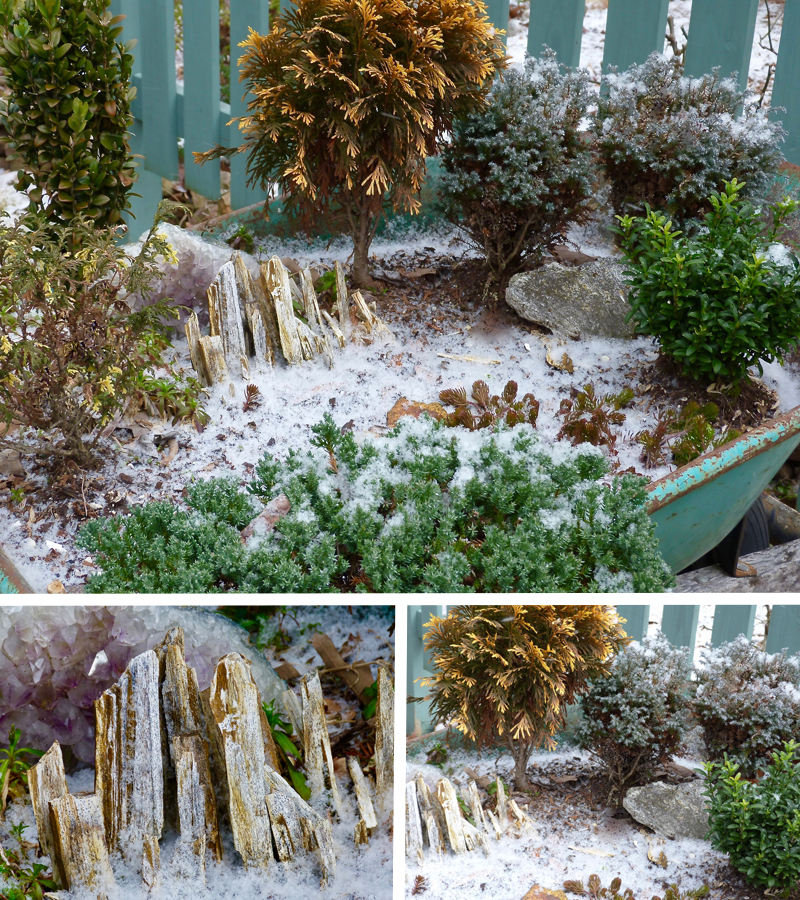
Here are a couple of scenes from inside the woodland garden, taken from opposite ends of the main path that runs through the area: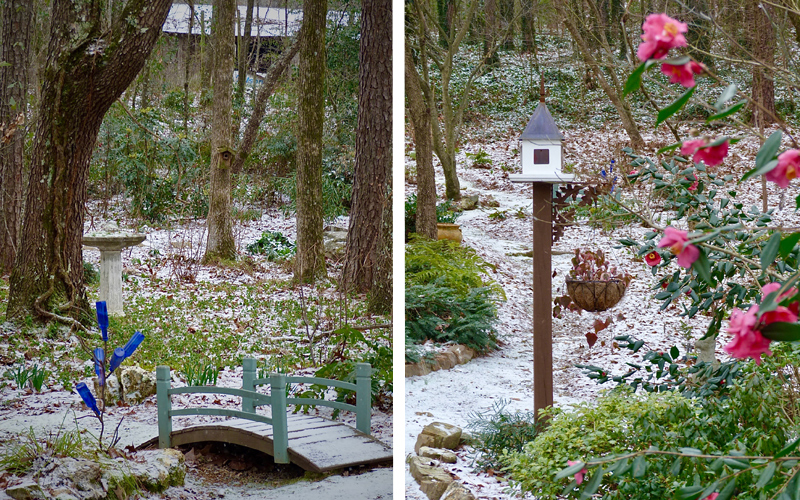
Finally, here are some more features I noted inside the woodland garden: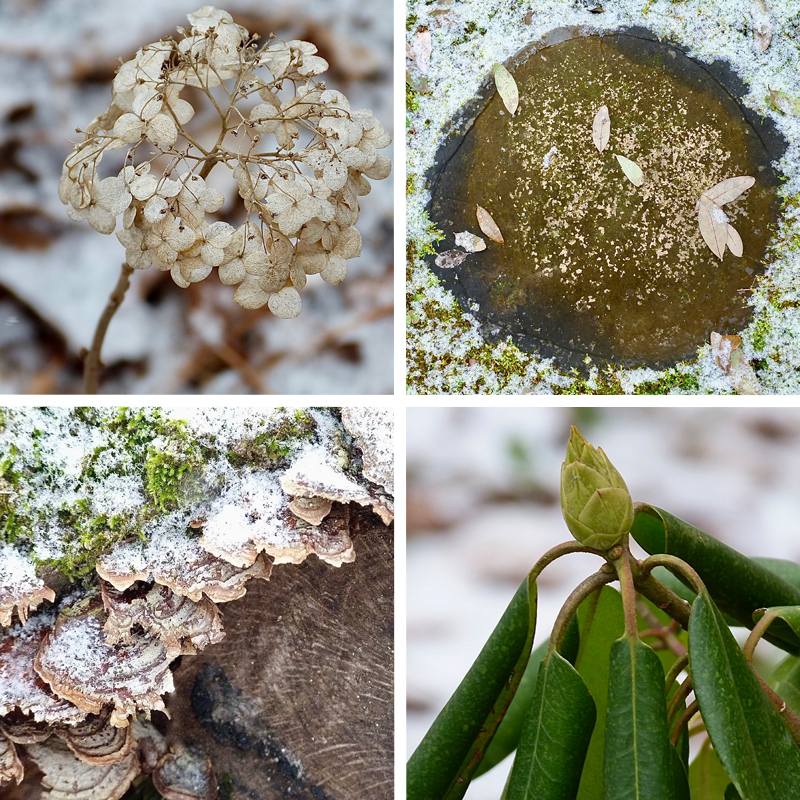 Clockwise from top left: A dried hydrangea bloom, leftover from last year; A stepping stone, decorated by nature; A shivering rhododendron that will perk up as soon as the temp rises. The curled leaves help protect the plant from very cold weather; Turkey-tail fungus and moss growing on an old stump.
Clockwise from top left: A dried hydrangea bloom, leftover from last year; A stepping stone, decorated by nature; A shivering rhododendron that will perk up as soon as the temp rises. The curled leaves help protect the plant from very cold weather; Turkey-tail fungus and moss growing on an old stump.
By now I was freezing! It was time to head inside for something hot to drink and to curl up by the fire with a good book. Happy winter!